Beyer's Byways: Washington D.C. may be a 'swamp,' but it's full of history, museums
- Oops!Something went wrong.Please try again later.
- Oops!Something went wrong.Please try again later.
Laureen, my lovely wife, and I have a deal. Being avid travelers, we decided years ago that every other year we would travel out of the country, and the following year, within in the country.
That worked for decades: England and then South Dakota. Fuji and then Texas. Ireland and then Oklahoma. Peru and then Oregon.
Seemed pretty simple and straightforward.
The year 2023 meant out of the country. Though we did travel to Austria in 2022, but that was an anomaly since we hadn’t been able to travel much during those restrictive COVID times, in or out of the country. Besides, we just wanted to travel, and got a killer deal.
Though I did travel secretly, not letting anyone know of those travels during the restrictions certain entities put on their citizens. I had a travel column to write. It was my duty to throw caution to the wind.
California was so restrictive that I read about a dolphin that was arrested near the Santa Monica pier for swimming without a mask.
“Scotland it is,” I stated one early morning.
“How about Washington D.C. instead,” Laureen countered.
Nope, it was the ‘out of the country year’ - I knew who would win this discussion.
A few weeks later, we were headed to the Los Angeles International Airport for our flights.
And soon, we were landing at the Ronald Reagan Washington National Airport.
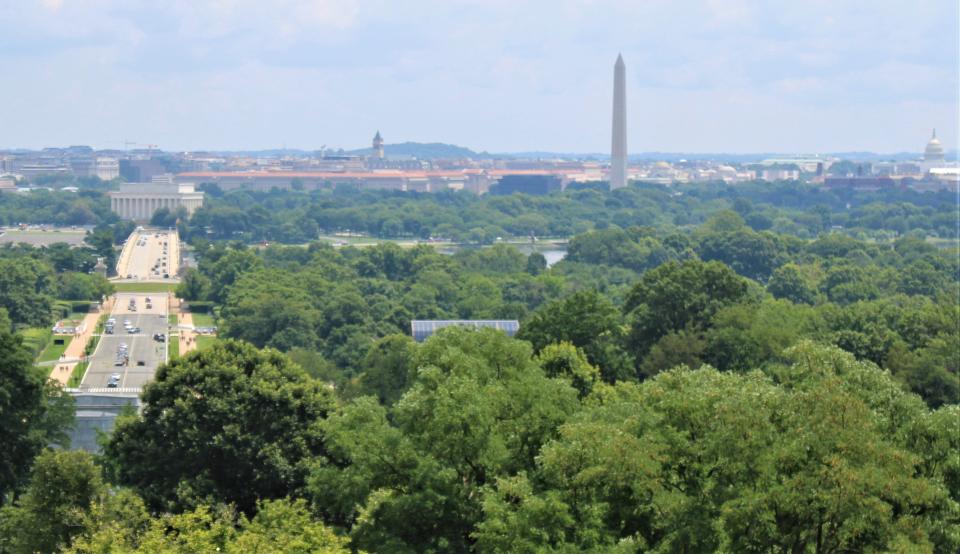
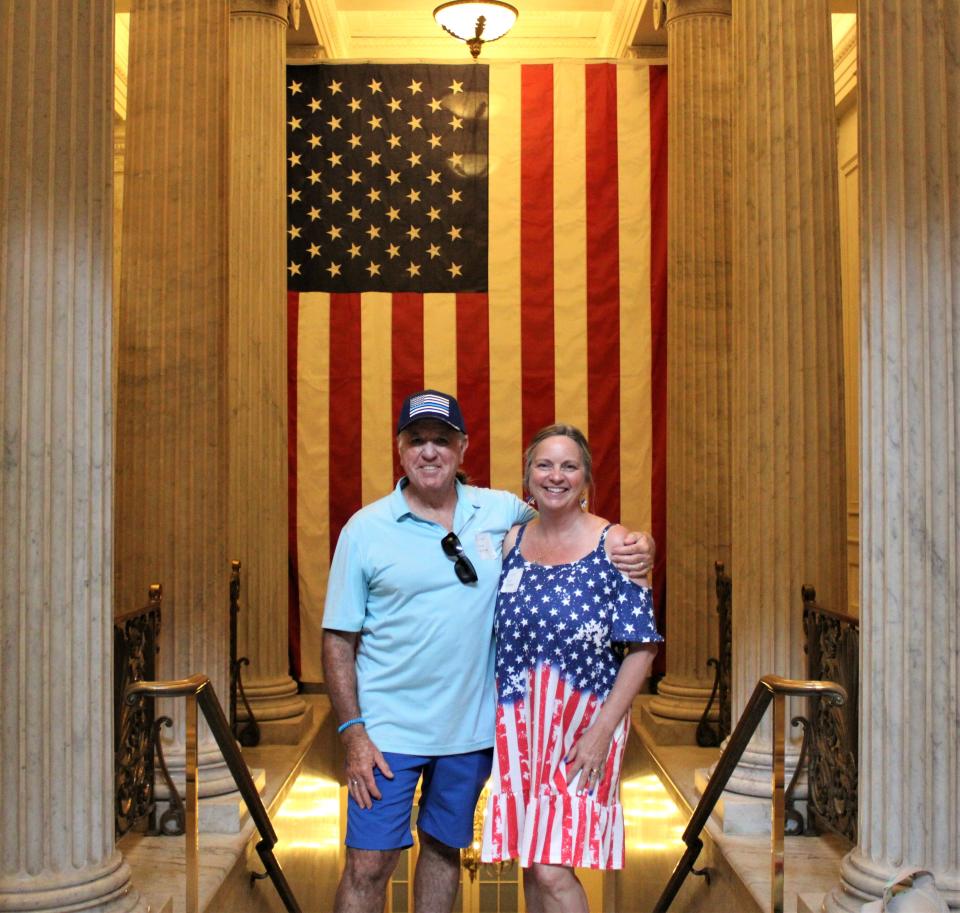
Most would think that this would be a quick layover to the next flight which would deliver this traveling duo to the Edinburgh Airport in the area once known as Caledonia.
Nope, we were staying in the swamp of Washington D.C.
“You know it really wasn’t built on a swamp,” Laureen stated as we waited for our car to take us to the hotel.
I had heard, from unreliable sources, that the capital of the United States had been built on a mosquito infested, alligator overrun swamp that oftentimes the likes of Sasquatch would snatch lawmakers out of their Congressional seats.
Just a myth - but a good one.
George Washington, the first president of the United States, envisioned this city on the banks of the Potomac River since it was so close to Georgetown, a strategically important locale at the time.
The town was probably named after King George III (whom we pummeled), or either George Gordon and George Bell who first owned the land.
Does it matter?
George Washington just wanted the land to be away from the swampland that surrounded Chesapeake Bay.
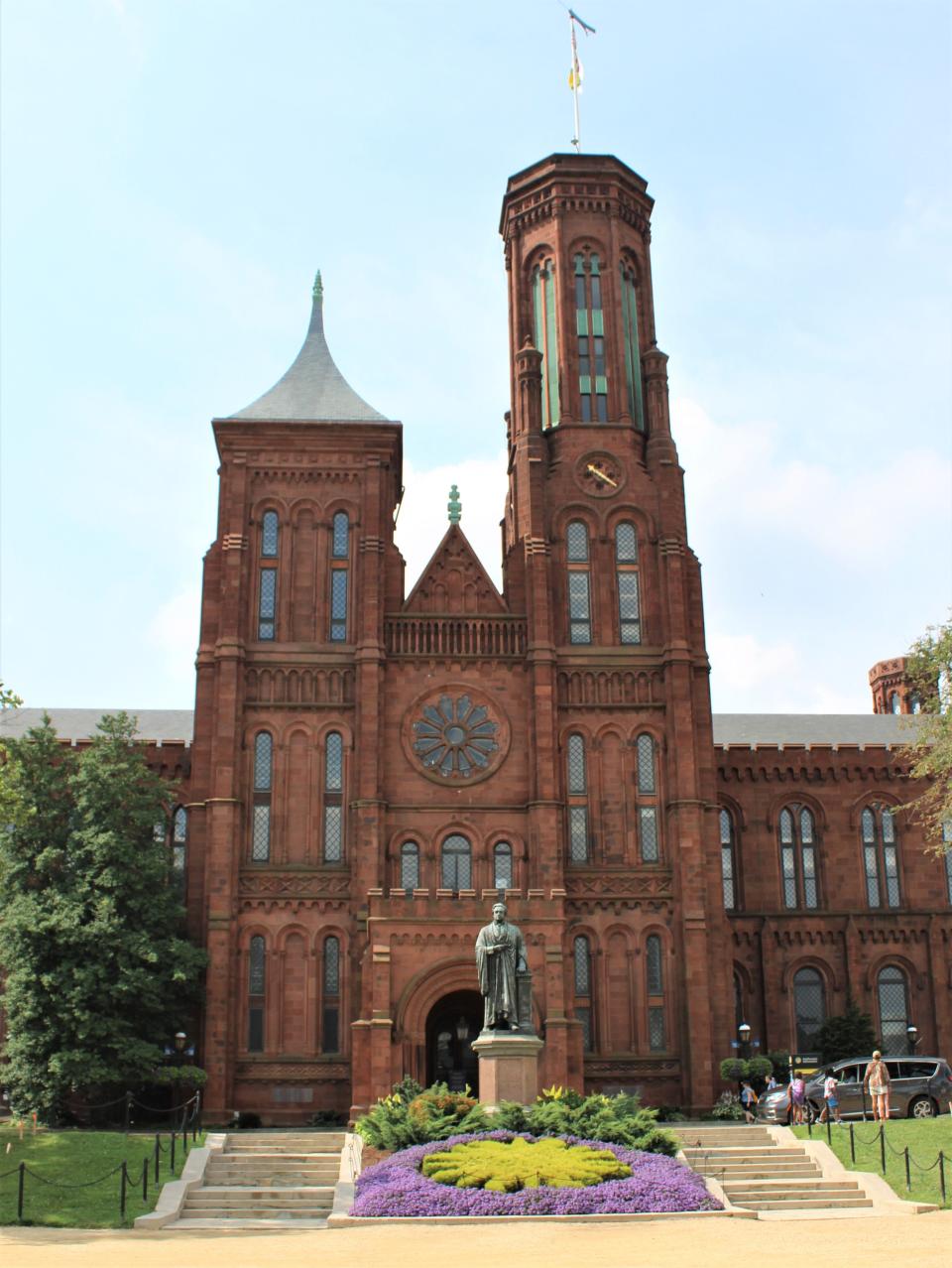
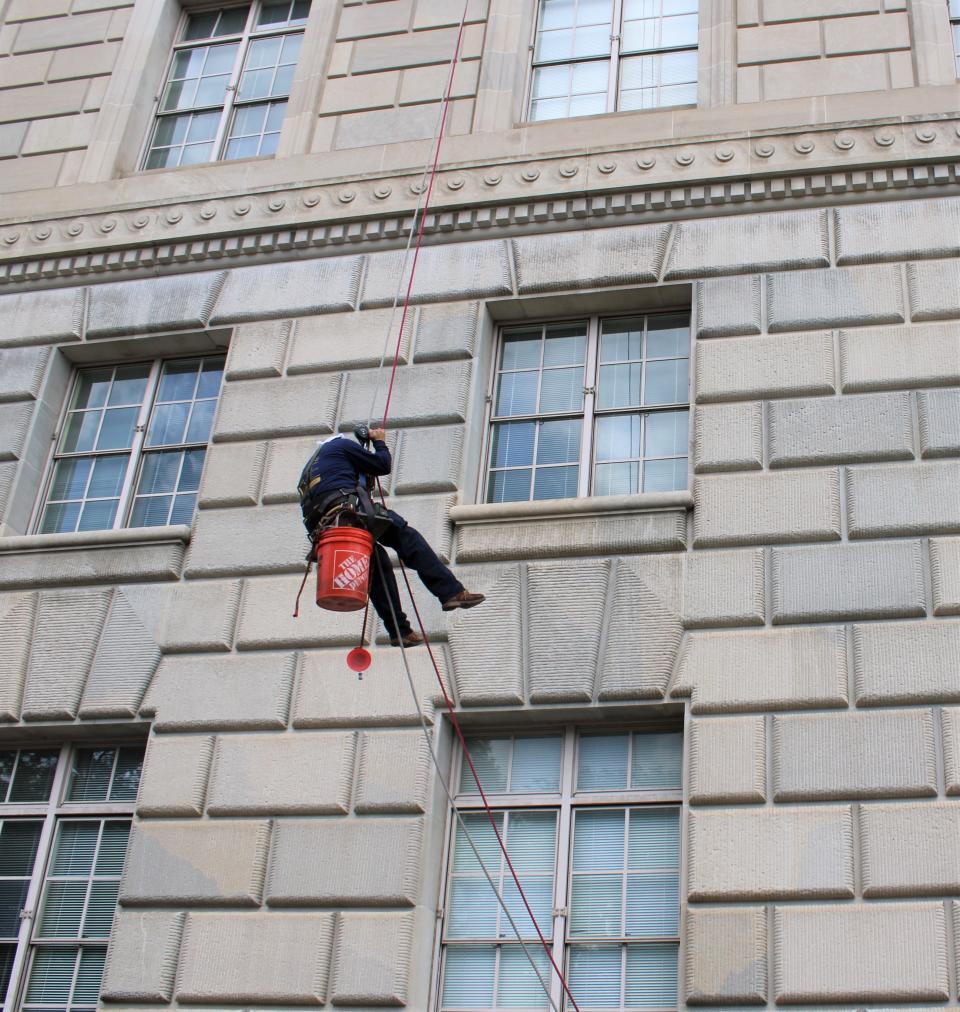
It is rumored that the future president said, “I hath thought of a most opportune locality for the splendid capital of this country we are striving to complete.”
His assistant may have replied, “Hath you?”
“Yeth, I hathhh,” Washington started but stopped, as his wooden choppers fell into some swampy ground at his feet.
Being from a drier climate than Washington D.C. is during July, I felt the sweat start rolling down my back like a leech that has attached itself to your body while swimming in a not-so-clean lake.
Actually, leeches don’t move much, they just burrow into your body searching for blood. I’ve had a few in my time adventuring here and there in remote locales.
But my sweat rolled down from my back like the Potomac River making sure everyone knew I was a sweat attractor. And we were barely out of Terminal 2 at that point.
“It’s humid,” I said.
“The car is air conditioned,” Laureen replied, as our driver showed up.
“Aren’t you sweating?”
“Women glisten,” she said. “Men sweat.”
Thus began my adventure where three separate branches of government rule this great land of ours.
The Executive Branch, the Legislative Branch, and the Judiciary Branch. All separate but equal.
I would be the judge of that, by the time this trip to the swamp was complete.
First, to the hotel and a cold adult libation. It was awfully muggy.
How muggy? A person could wear this weather.
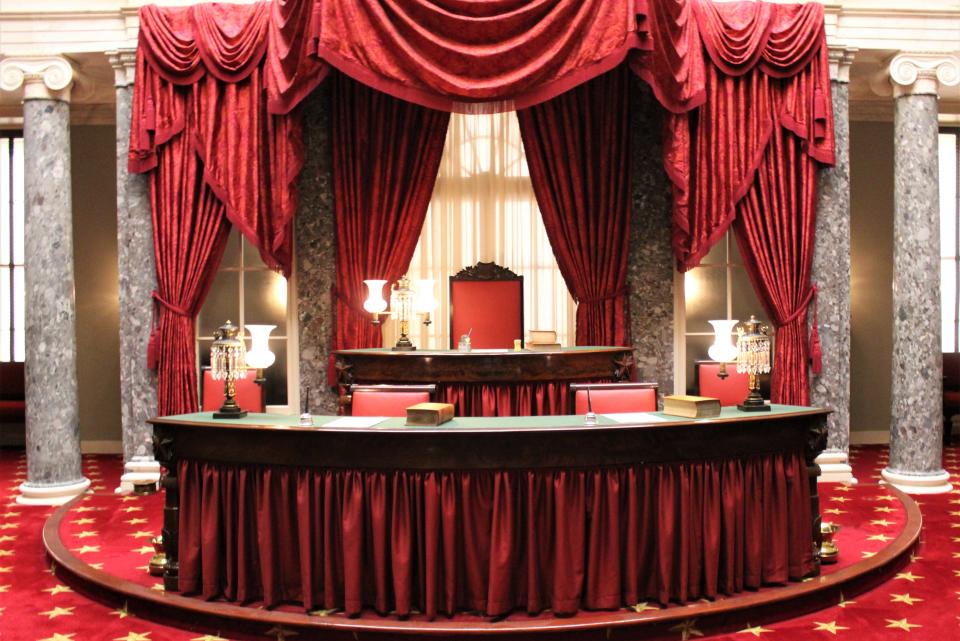
I had never been to Washington D.C., and I was looking forward to all the sites to be sought.
George Washington, besides being the first president of the newly formed United States and the Hero of the Revolutionary War, actually chose the location of the nation’s capital.
The future home to the Republic was to be between the Potomac and Anacostia Rivers, above the shores and away from any of the swamp lands that are often present in slow brackish water located in eddies or estuaries.
The states of Maryland and Virginia ceded the land to build the capital, and according to the newly written Constitution, the area would be referred to as a ‘district’ distinguishing itself from belonging to any particular state.
Thomas Jefferson and his fellow signers knew that the nation's capital had to be independent and never given state status, since that would imbue the small state an immense amount of clout that the other states would not have.
Pierre L’Enfant, clearly a Frenchman, drew up some really cool plans for the new city.
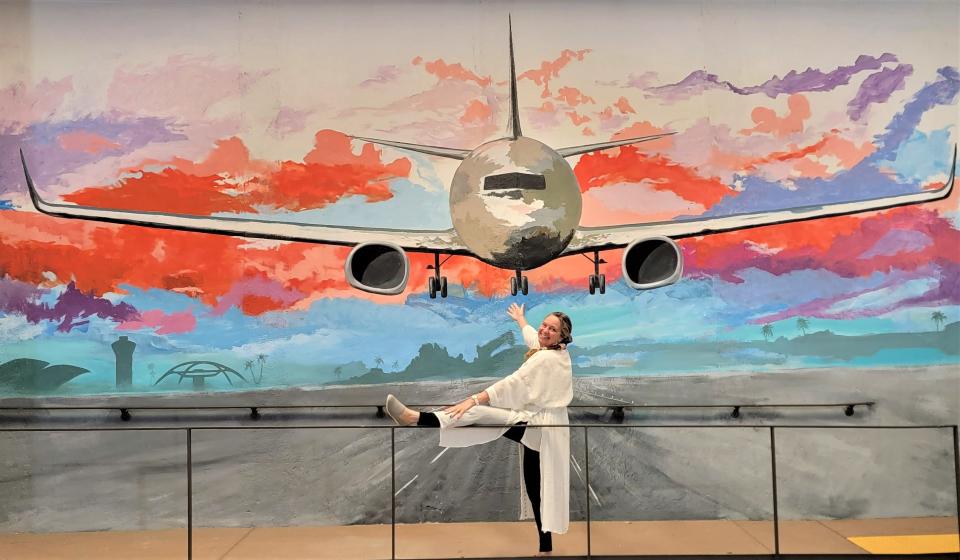
“I, Pierre L’Enfant,” announced L’Enfant in a perfect French accent, “will make something you Americans could never think of. Because I am French.”
Rumor is that a howling wind was sweeping along the Potomac and an aide to President Washington cupped his ears and said, “What did he say about an elephant?”
The center of this new city would be the Capitol building where all the important issues would be decided by those elected by their constituents.
Washington D.C. was off to a roaring start, but then the British invaded during the War of 1812 and burned down the White House, the Capitol, and the Library of Congress in 1814.
That was very rude of them, and to this day no true American will ever learn the rules to some silly game called cricket.
The new white house was designed by an Irish-American by the name of James Hoban and was rebuilt in 1817.
He passed away on December 8th, 1831. I only mention this since I was born on December 8th and wonder if I may have gotten some of my building talents from my fellow Irishman. Aye, we Irish are a bit superstitious and believe in tall tales and conjuring of the spirits.
The town did not have much of a population and in 1847 grew smaller both in folks living there and actual acreage. The area, now known as Alexandria, left the district since they felt as though they were not being treated well by those across the wide Potomac River.
It wasn’t until the Civil War that Washington D.C. increased in size, partly because all enslaved persons in the district were emancipated on April 16, 1862 - nine months before President Lincoln wrote the Emancipation Proclamation.
It became the hub for free slaves and the city flourished. Frederick Douglass, who met with President Lincoln on three occasions, made Washington D.C. his home.
The federal government grew during the war and a large army was barracked there to protect, not only the president but the rest of the United States Government. A good decision, since Virginia joined with the Confederate States of America and the state can easily be seen by the naked eye from the White House.
The history of the United States is jam packed in Washington D.C. from the Revolutionary War, to the Civil War, and beyond.
This is the centerpiece for all the action this wonderful country has seen. It was about time I visited and learned first-hand what this mecca for democracy had to offer.
After changing out of my thoroughly wet clothing in the hotel and feeling a few pounds lighter from water loss, Laureen asked what I wanted to do first.
“There is so much to see and learn,” I replied. “I’m not sure where to start.”
“There’s the National Mall, the reflecting pool, the Washington Monument,” she said. “Or perhaps we could just saunter through some of the Smithsonian Museums until we get our bearings.”
So much to see, and so little time. We had nine days to take in 247 years of the unbelievable history of triumph, defeat, wonder, hope, imagination, despair, struggle, argument, world aggression, and the rest that makes the United States what it is today. Where to start was a question I pondered for a moment.
But as I stood in the comfort of the air-conditioned lobby of our hotel and looked across the street. I knew where I wanted to start this new adventure to learn about those who not only built the history of our beautiful country but the city itself.
“There.” I said.
“Where?” Laureen asked.
“Across the street, at the Capitol City Brewing Company.”
And our adventure began.
John can be contacted at: beyersbyways@gmail.com
This article originally appeared on Visalia Times-Delta: Washington D.C. may be a 'swamp,' but it's full of history, museums

